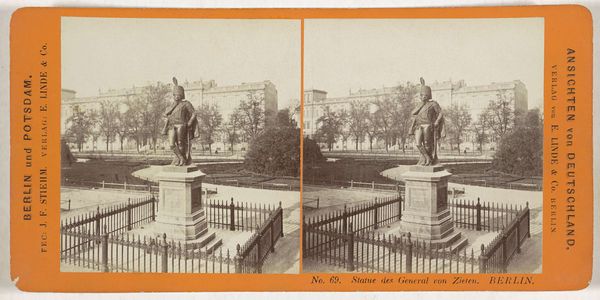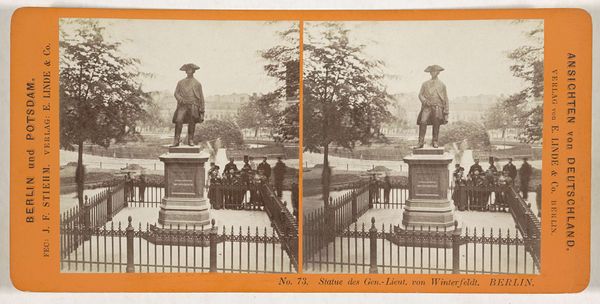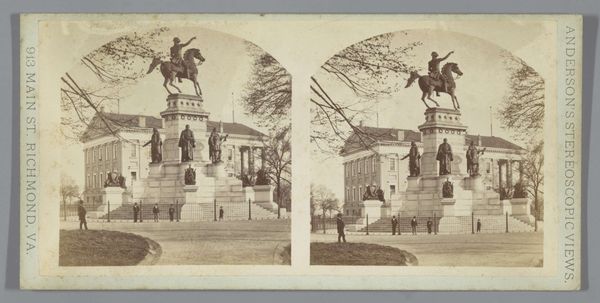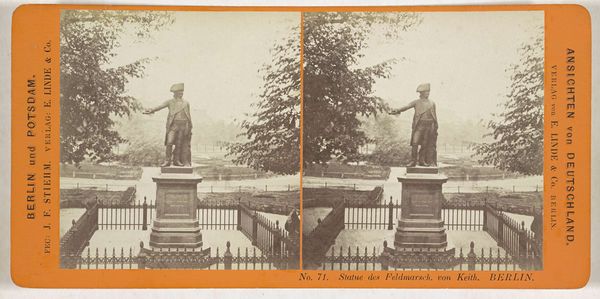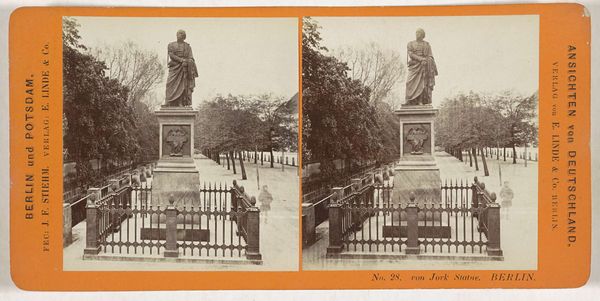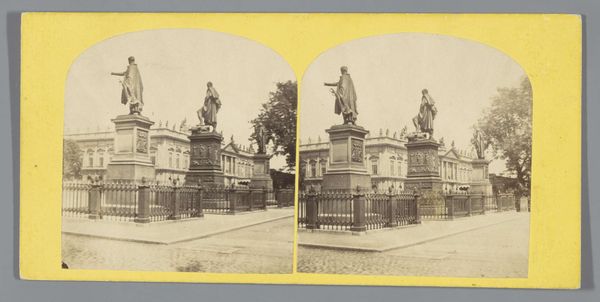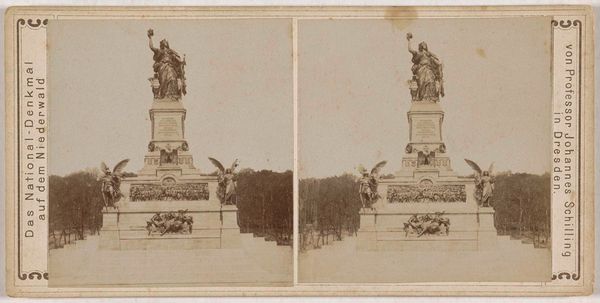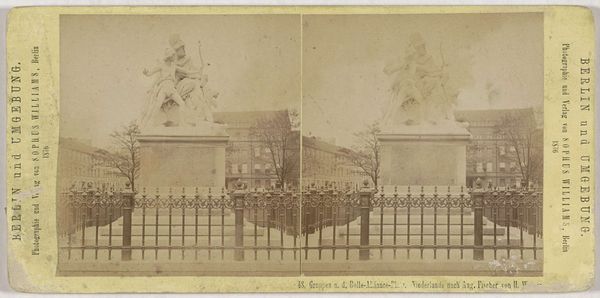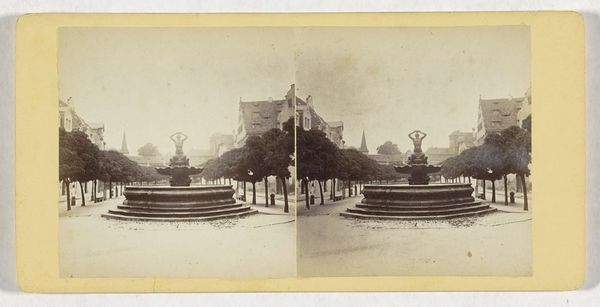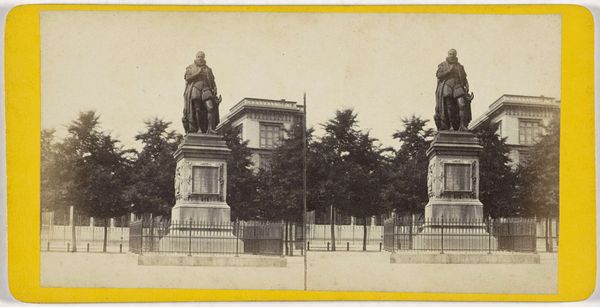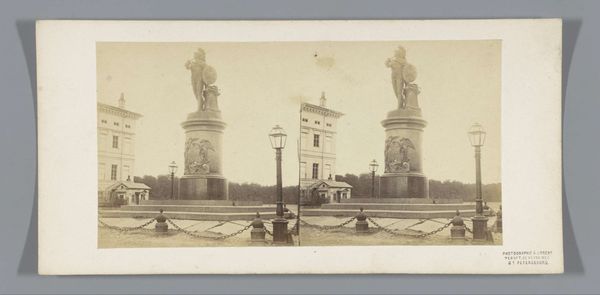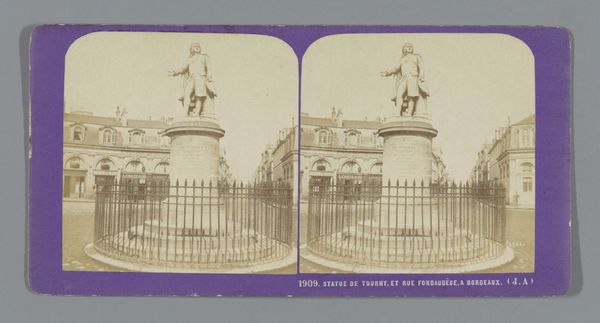
Standbeeld van Leopold I van Anhalt-Dessau op het Zietenplatz, Berlijn 1868 - 1870
0:00
0:00
Dimensions: height 86 mm, width 176 mm
Copyright: Rijks Museum: Open Domain
Editor: So, this photograph is of the "Standbeeld van Leopold I van Anhalt-Dessau op het Zietenplatz, Berlijn," taken between 1868 and 1870 by Johann Friedrich Stiehm. It's quite formal, with the statue centered and the cityscape symmetrically arranged. What elements of the image strike you first? Curator: The photograph presents a compelling study of form and spatial relationships. Note how the geometry of the statue’s pedestal—its rigid verticality and precisely defined tiers—contrasts with the more organic forms of the surrounding landscape. How does the placement of the statue affect your reading of the image? Editor: I hadn’t thought about it like that! Its placement certainly dominates, drawing the eye upward and establishing a clear focal point. Is it meant to project some other formal reading through the photograph medium? Curator: Consider the textures: the rough-hewn quality implied in the sculptural material versus the relatively smooth surfaces of the surrounding architecture, rendered in the stark contrast of black and white photography. Think also about the lines created by the fencing, directing our gaze and creating a sense of enclosure, contrasting with the wide-open cityscape. Does the framing alter how you view the forms within? Editor: Yes, I think it makes the statue almost monumental by focusing the eye and guiding vision towards it. It highlights that sense of formal, sculptural integrity you were mentioning, and now that you describe all of this in relation to texture I also notice new levels of visual experience within it! Thanks! Curator: It's in deconstructing and re-examining those visual relationships that we gain a deeper insight.
Comments
No comments
Be the first to comment and join the conversation on the ultimate creative platform.
